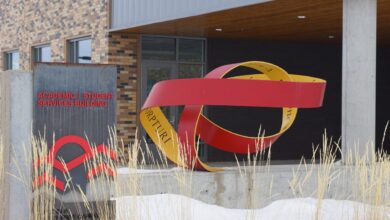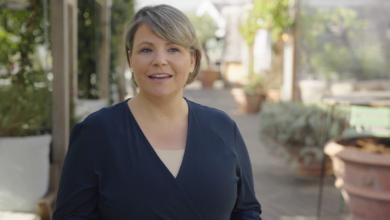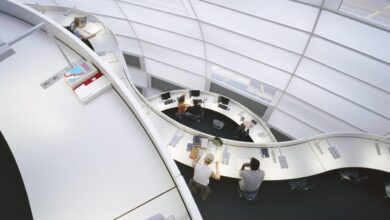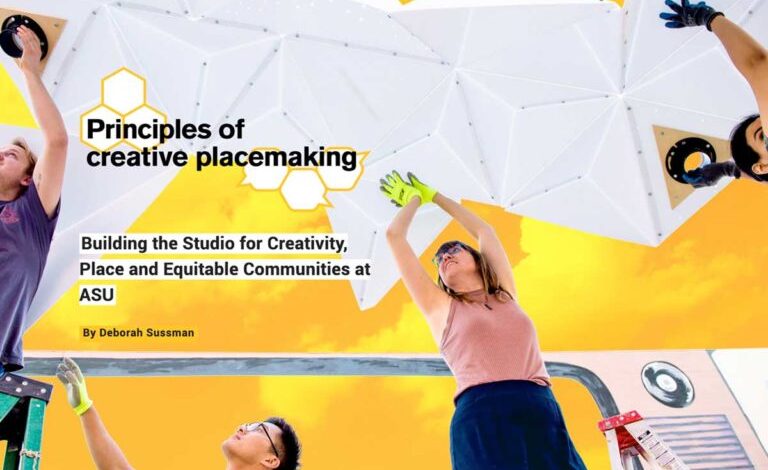
The Creative Sectors Role in Placemaking
The role the creative sector plays in placemaking is a captivating exploration of how art, design, and culture can transform communities. From vibrant urban spaces to revitalized rural areas, creativity fosters unique identities, drives economic growth, and strengthens community bonds. This journey delves into the specifics of how different creative sectors contribute to placemaking, from the architectural design of buildings to the public art installations that add character and life to a location.
This exploration examines the multifaceted relationship between creativity and placemaking, considering not just the aesthetics but also the economic and social impact. We’ll explore the innovative strategies that are shaping the future of placemaking and the challenges that lie ahead.
Defining Placemaking and the Creative Sector
Placemaking is the art and science of creating vibrant, thriving communities by enhancing public spaces and fostering a sense of belonging. It’s about more than just aesthetics; it’s about fostering social interaction, economic development, and a strong sense of place. Successful placemaking initiatives consider the needs of residents, businesses, and visitors, weaving together diverse elements to create a unique and compelling identity.
It’s a collaborative effort involving community members, policymakers, and the creative sector.Placemaking initiatives can range from revitalizing a neglected neighborhood to developing a new town square. Their success is measured by the positive changes they bring to the community, such as increased foot traffic, economic growth, and a heightened sense of community pride. A good example of a placemaking initiative is the revitalization of the waterfront in Baltimore, Maryland, which transformed a once-abandoned area into a bustling hub for recreation and commerce.
Another example is the transformation of a former industrial site into a mixed-use development in Detroit, showcasing how creative solutions can breathe new life into underutilized spaces.
Defining Placemaking
Placemaking is a multifaceted process focused on improving the quality of life within a specific area. It’s about fostering a sense of community and identity by creating attractive and functional public spaces. Key principles include community engagement, sustainability, and a focus on the unique characteristics of the place. The goal is to create a sense of place that is both visually appealing and functional, encouraging interaction and fostering a strong sense of belonging among residents.
Examples of Successful Placemaking Initiatives
Numerous successful placemaking initiatives exist across diverse settings. In urban areas, revitalization projects have transformed neglected neighborhoods into thriving communities. For instance, the transformation of the Lower East Side in New York City exemplifies how careful urban planning and design can boost a neighborhood’s economy and attract new residents. In rural areas, the development of community gardens and farmers’ markets has fostered social interaction and strengthened local food systems.
The revitalization of historic downtowns in small towns across America demonstrates how preserving local history and character can attract tourists and bolster local economies.
Characteristics of the Creative Sector
The creative sector encompasses a wide range of disciplines, including art, design, architecture, and filmmaking. Its diverse practitioners use their creativity and technical skills to solve problems and express ideas in novel ways. This includes visual artists, graphic designers, architects, musicians, and writers. The sector is characterized by its ability to generate innovative solutions, often fostering collaboration and cross-disciplinary approaches.
The creative sector thrives on experimentation, innovation, and a constant push for new ideas.
Creative Businesses and Organizations in Placemaking
A variety of creative businesses and organizations contribute significantly to placemaking. This includes architectural firms, design studios, artists, and cultural organizations. These entities often spearhead projects that revitalize public spaces, enhance community engagement, and foster a sense of place. Many creative businesses and organizations are also directly involved in the creation and promotion of public art installations, community events, and cultural programs.
Examples include urban planning firms that design public spaces, artists who create murals and sculptures for public display, and cultural organizations that host festivals and performances.
Placemaking Activities of Different Creative Sectors
| Creative Sector | Placemaking Activities | Impact on Community |
|---|---|---|
| Architects | Urban design, building construction, public space design | Improved aesthetics, increased property values, enhanced functionality of public spaces |
| Artists | Public art installations, murals, street art, community art projects | Enhanced visual appeal, cultural identity, increased foot traffic, and tourism |
| Filmmakers | Documentaries about the history and culture of a place, short films showcasing community life, and community events | Improved community narrative, heightened sense of pride, increased local tourism |
| Designers | Branding and visual identity for local businesses, signage design, and community wayfinding | Improved aesthetics, increased brand recognition for businesses, enhanced navigation, and overall appeal |
Creative Contributions to Place Identity
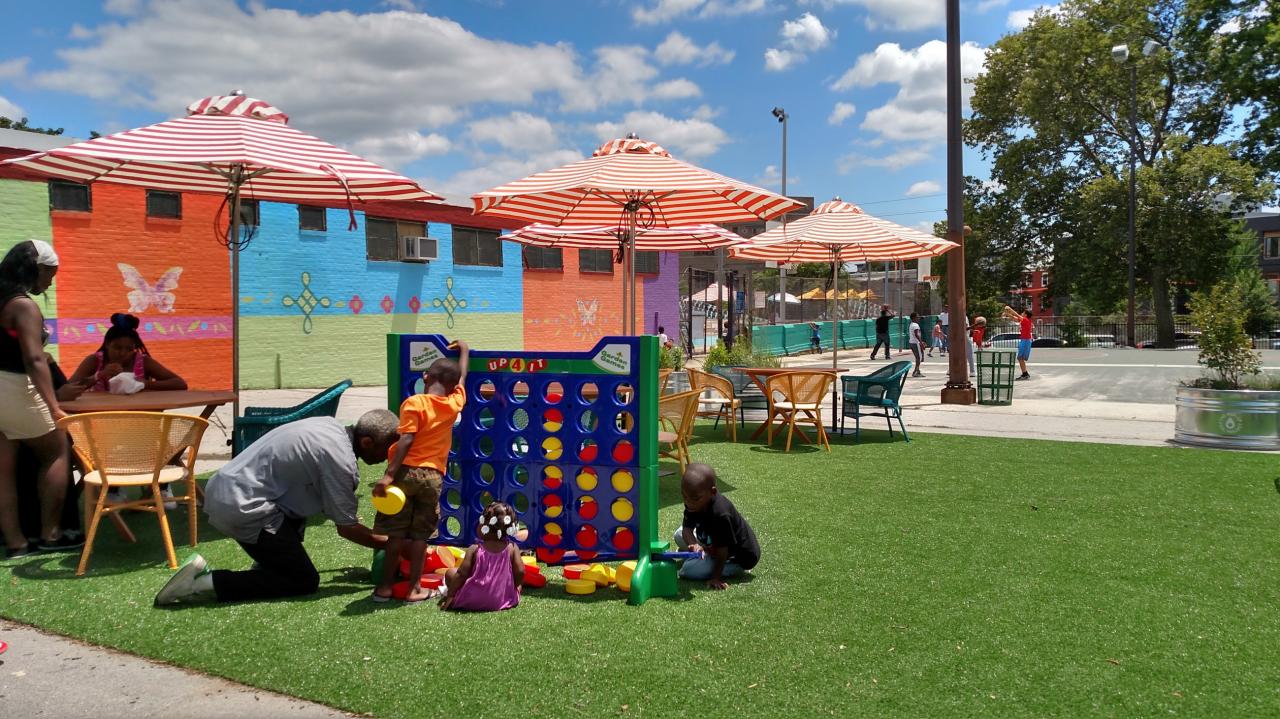
Creativity isn’t just about art; it’s the lifeblood of a place. From the intricate patterns of a handcrafted ceramic piece to the rhythmic beats of a local band, creative expressions deeply shape a community’s identity. They breathe life into the spaces we inhabit, fostering a sense of belonging and pride that transcends mere geography. These expressions, whether visible or intangible, are the threads that weave together the fabric of a place.Local narratives and traditions are fundamental to placemaking.
They are the stories that echo through generations, shaping the values and aspirations of a community. These narratives, often embodied in creative works, become powerful symbols of heritage and cultural identity, forming the bedrock upon which new expressions are built. By preserving and celebrating these narratives, we safeguard the unique character of a place.
Local Narratives and Traditions in Placemaking
Local narratives and traditions are vital components of a place’s unique identity. These stories, passed down through generations, are often embedded in the creative expressions of a community. They include historical accounts, folklore, and cultural practices that have shaped the community’s values and traditions. These narratives can be found in local music, literature, visual arts, and even architecture.
They serve as a powerful connection to the past and inspire the present and future of the place. Examples include oral histories, historical documents, local legends, and traditional ceremonies.
Examples of Creative Projects Reflecting Place Character
Numerous creative projects embody the unique character of a place. A community theatre production based on local folklore can bring the stories to life for new generations. A series of public art installations featuring local flora and fauna can showcase the region’s natural beauty. A music festival highlighting the region’s diverse musical traditions can foster a sense of cultural pride and celebration.
These projects aren’t just aesthetic additions; they are living embodiments of the place’s identity. For instance, a mural depicting the history of a local neighborhood fosters a sense of community pride and encourages dialogue about the past.
Creative Projects and Sense of Belonging
Creative projects have a profound impact on fostering a sense of belonging and pride. When individuals can see their community reflected in art, music, or literature, they feel a stronger connection to the place. These projects become shared experiences that bind people together, reinforcing a sense of collective identity. Participation in creating or experiencing these projects strengthens the social fabric of the community, building relationships and shared memories.
Creative Elements for Showcasing Unique Identity
A place’s unique identity can be showcased through various creative elements:
- Local Folklore and Legends: These stories often embody the spirit and values of a place, reflecting its history and traditions.
- Traditional Crafts and Artisanal Practices: These crafts often use materials native to the region, reflecting the local environment and resources.
- Historical Architecture and Public Spaces: These structures often embody the history and cultural heritage of the place, serving as visual reminders of the past.
- Community-Based Art Installations: These installations often involve local artists and residents, reflecting the collective creativity and identity of the community.
- Local Music and Performing Arts: These forms of expression can showcase the diverse cultural heritage and musical traditions of a region.
Comparing Creative Expressions and Place Identity
The following table highlights how different creative expressions contribute to place identity:
| Creative Expression | Contribution to Place Identity | Examples |
|---|---|---|
| Visual Arts | Enhance aesthetics, tell stories, evoke emotions, and provide a visual representation of the place’s history and culture. | Public art installations, murals, sculptures, photography exhibitions, and paintings. |
| Music | Create a vibrant atmosphere, foster cultural exchange, and evoke emotions and memories associated with the place. | Live music venues, festivals, concerts, and recordings of local musicians. |
| Literature | Capture the essence of a place through narratives, poems, and stories, offering insights into its culture, values, and traditions. | Local authors, literary events, and historical accounts. |
Creative Industries’ Economic Impact on Placemaking
The creative sector is a powerful engine for economic growth and revitalization in communities. Beyond its cultural and social contributions, the creative industries offer significant economic benefits that can transform a place. From attracting investment and tourism to generating employment and boosting local businesses, the creative sector’s impact is multifaceted and substantial.The creative industries are increasingly recognized as key drivers of local economies.
Their ability to attract investment, generate employment, and enhance a place’s appeal to tourists and residents contributes directly to a community’s overall prosperity. This impact is not limited to large metropolitan areas; smaller towns and cities can also benefit greatly by nurturing and supporting their local creative talent.
Economic Benefits of Fostering the Creative Sector
Creative industries bring a unique set of economic advantages to a place. They often require less capital investment than traditional industries, making them attractive to entrepreneurs and investors. Furthermore, the creative sector is often highly adaptable, allowing it to respond quickly to changing market demands and trends.
Attracting Investment and Tourism
Creative businesses frequently attract investment by creating a vibrant and desirable environment. The presence of galleries, studios, and performance spaces can make a place more attractive to businesses, residents, and tourists alike. For example, cities known for their film industries often see an influx of investment from production companies and related businesses, as well as a surge in tourism from film enthusiasts.
This positive feedback loop can stimulate economic activity across the entire local economy. Art galleries, music venues, and design studios also attract tourists, increasing foot traffic and revenue for local businesses.
Generating Employment Opportunities and Income
Creative industries are significant job creators, generating employment across various skill levels. From graphic designers and musicians to filmmakers and architects, the diverse range of creative professions provides opportunities for individuals with varying backgrounds and skill sets. Moreover, creative businesses often provide higher-than-average wages, especially in specialized areas.
Role of Creative Entrepreneurs in Driving Economic Development
Creative entrepreneurs play a crucial role in fostering innovation and economic development within a community. They are often at the forefront of developing new products, services, and business models, driving economic growth and creating jobs. For example, a successful designer may develop unique product lines, opening up new retail avenues and creating employment for other artisans.
Impact on Property Values and Local Business Growth
The presence of creative industries can positively impact property values in a neighborhood. The vibrancy and desirability associated with creative spaces often lead to higher property values. This, in turn, can stimulate the growth of other businesses in the area, as they benefit from the increased foot traffic and economic activity. For example, a neighborhood with thriving art galleries or music venues often sees an increase in the value of surrounding properties, as well as the development of complementary businesses like cafes and restaurants.
Economic Contributions of Different Creative Industries
| Creative Industry | Economic Impact | Examples of Businesses |
|---|---|---|
| Film Production | Job creation, tourism, investment | Film studios, production companies, post-production houses, costume designers, makeup artists |
| Design | Product development, branding, retail | Graphic designers, interior designers, industrial designers, fashion designers, product designers |
| Music | Live performances, recordings, merchandise, tourism | Musicians, bands, music venues, record labels, music festivals |
| Writing and Publishing | Book sales, author tours, media production | Authors, publishers, editors, booksellers, literary agents, bloggers, freelance writers |
Community Engagement and Placemaking Through Creativity: The Role The Creative Sector Plays In Placemaking
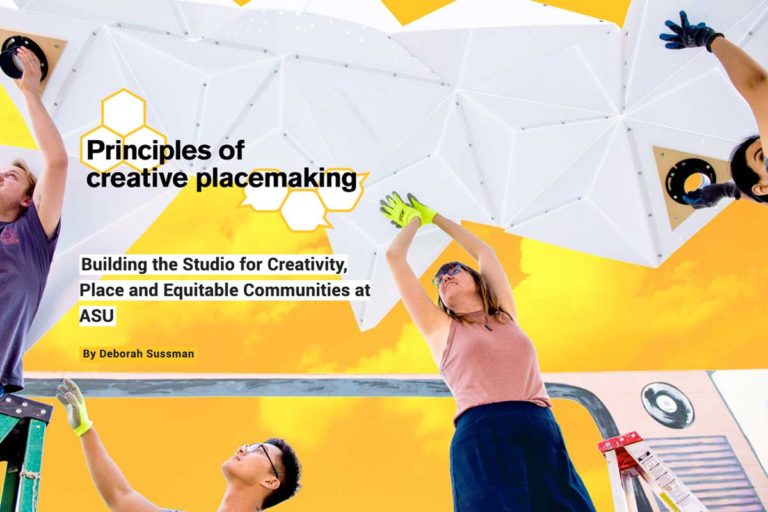
Community engagement is paramount in creative placemaking initiatives. It ensures projects resonate with the needs and aspirations of the local population, fostering a sense of ownership and pride. By actively involving residents, projects are more likely to thrive and become sustainable anchors for the community’s future. Successful placemaking hinges on understanding and responding to community needs, and this active engagement is the key.Community engagement is not just a nice-to-have; it’s a crucial element in the success of any creative placemaking project.
Engaging communities in the creative process builds a stronger sense of place, encourages collaboration, and ultimately leads to projects that are more meaningful and enduring. It’s about recognizing that places are not just physical spaces but vibrant ecosystems shaped by the people who live, work, and play within them.
Importance of Community Engagement
Community engagement is vital because it fosters a sense of ownership and investment in the project. When residents feel heard and valued, they are more likely to participate actively and support the long-term success of the initiative. This shared ownership translates into greater community pride and a stronger sense of place identity. Moreover, community engagement allows for a deeper understanding of local needs and aspirations, ensuring that projects are tailored to meet these specific requirements, rather than imposing external ideas.
Methods for Engaging Communities in Creative Projects
Engaging communities effectively requires a multi-faceted approach. Public forums, workshops, and online platforms are key methods for facilitating dialogue and gathering input. These platforms provide avenues for residents to share their ideas, concerns, and visions for their community. Furthermore, direct interaction through surveys, focus groups, and interviews offers valuable insights into individual perspectives. These varied approaches provide a more comprehensive picture of community needs and aspirations.
Examples of Successful Community-Driven Creative Projects
Many successful community-driven creative projects demonstrate the power of collaboration and community involvement. One notable example is the revitalization of a neglected urban park in a city. Through a series of community workshops and design sessions, residents contributed their ideas for transforming the park into a vibrant space for recreation, art installations, and community events. This resulted in a park that truly reflected the community’s identity and aspirations.Another successful example involves a neighborhood that partnered with local artists to create public murals that showcased the history and culture of the area.
These murals served as a powerful visual representation of the community’s story, attracting attention and generating pride among residents.
Role of Collaboration and Partnership in Placemaking
Collaboration and partnership are crucial in placemaking. Successful projects often involve partnerships between local governments, community organizations, artists, and residents. This collaborative approach allows for a wider range of expertise and resources to be brought to bear on the project. Furthermore, partnerships facilitate knowledge sharing and enhance the project’s long-term sustainability.
Involving Residents in Shaping the Creative Landscape
Involving residents in shaping the creative landscape of their place requires a commitment to active listening and a willingness to incorporate their feedback. This involves providing multiple opportunities for participation, whether through online platforms, public meetings, or workshops. Moreover, it is essential to create a welcoming environment where residents feel empowered to share their ideas and perspectives. Transparency and clear communication are key to building trust and ensuring that everyone feels involved in the process.
Approaches to Community Engagement in Creative Placemaking Projects
| Approach | Description | Benefits |
|---|---|---|
| Public Forums | Gathering community input through open discussions and presentations. | Increased community buy-in, shared ownership of the project. |
| Workshops | Facilitating creative activities and feedback sessions, such as design charrettes or brainstorming sessions. | Fosters creativity, generates innovative ideas, and promotes active participation. |
| Online Platforms | Utilizing online forums, social media groups, or dedicated websites to solicit feedback and facilitate discussion. | Enhances accessibility for residents with varied schedules and allows for broader reach within the community. |
Creative Placemaking Strategies and Best Practices
Creative placemaking isn’t just about aesthetics; it’s about fostering vibrant, sustainable communities. Successful strategies leverage the power of creativity to address social, economic, and environmental challenges, transforming spaces into dynamic hubs of activity. By understanding and applying effective techniques, communities can unlock the full potential of their unique identities.Creative placemaking strategies must be tailored to the specific needs and aspirations of each community.
The creative sector is vital in breathing life into a place, transforming it from just a collection of buildings to a vibrant community hub. Think of murals, street art, and unique shops – these are all elements that give a place character and attract people. This is where the concept of “Hello world!” comes in, representing the initial spark that ignites a place’s potential.
Hello world! is a great example of how a creative approach can establish a space for growth and interaction. Ultimately, the creative sector’s influence on placemaking is about fostering a sense of belonging and encouraging a thriving community.
This involves a deep understanding of the local context, including the history, culture, and demographics of the area. A crucial element is community engagement, ensuring the projects resonate with the people who will be most impacted. Successful initiatives prioritize collaboration, fostering a sense of ownership and pride among residents.
Case Studies of Successful Projects, The role the creative sector plays in placemaking
Numerous examples showcase the power of creative placemaking. The revitalization of the East Village in New York City, driven by artists and entrepreneurs, transformed a once-gritty area into a thriving hub of culture and commerce. Similarly, the revitalization of the waterfront in Baltimore through public art installations and community events has brought a new vibrancy to the area.
These examples demonstrate the potential for creative placemaking to spark economic growth and social cohesion. These projects, while different in scale and scope, demonstrate the crucial role of community involvement in achieving sustainable outcomes.
Creative Strategies in Different Places
Various strategies are used in different communities. Public art installations, such as murals, sculptures, and interactive displays, are frequently employed to enhance aesthetics and spark conversation. Community-led workshops and cultural events can foster a sense of shared identity and pride. Local entrepreneurs and artists can be supported through mentorship programs and access to resources, stimulating economic activity.
Importantly, these initiatives should be carefully designed to engage the entire community, ensuring inclusivity and representation.
Sustainable Practices in Creative Placemaking
Sustainability is crucial in creative placemaking. Projects should consider the environmental impact of materials, construction methods, and operational practices. This involves using recycled or locally sourced materials, minimizing waste, and implementing energy-efficient solutions. For example, the development of green spaces in a renovated urban area can provide ecological benefits and recreational opportunities for residents. A holistic approach that balances creativity with environmental responsibility is vital.
Factors Contributing to Success and Failure
Successful creative placemaking initiatives often involve strong community partnerships, clear goals, and a long-term vision. Effective communication and collaboration among stakeholders, including residents, businesses, and government agencies, are essential. Conversely, a lack of community engagement, unrealistic expectations, or insufficient funding can lead to project failure. Understanding the local context and tailoring the initiative to the specific needs and desires of the community is paramount.
Measuring the Impact of Creative Placemaking
Measuring the impact of creative placemaking initiatives requires a multifaceted approach. Quantitative measures, such as increases in property values, job creation, and tourism, can be combined with qualitative assessments of community well-being, improved social connections, and enhanced cultural identity. Regular monitoring and evaluation are vital to assess the project’s effectiveness and adapt strategies as needed. Collecting data on community engagement and feedback, as well as monitoring changes in the environment, can help to understand the broader impact.
Comparison of Creative Placemaking Strategies
| Strategy | Description | Strengths | Weaknesses |
|---|---|---|---|
| Public Art Installations | Incorporating art into public spaces | Enhances aesthetics, fosters discussion, creates visual interest | May not always resonate with all community members, requires careful selection of artists and themes |
| Community-Led Workshops | Facilitating creative activities and skill-sharing | Builds community spirit, empowers residents, fosters creativity | May require significant volunteer effort, potentially limited reach |
| Support for Local Entrepreneurs | Providing resources and mentorship to local businesses | Stimulates economic growth, creates jobs, builds local businesses | Requires careful planning to avoid unintended consequences or competition |
Future Trends and Challenges in Creative Placemaking
The future of creative placemaking hinges on embracing innovation and adapting to evolving societal needs and technological advancements. Successful projects will need to anticipate and proactively address emerging trends and challenges, fostering resilience and long-term sustainability. This adaptability is crucial for maintaining the vibrancy and relevance of creative spaces.
Emerging Trends in Creative Placemaking
The creative sector is experiencing rapid evolution, influenced by technological advancements, shifting demographics, and evolving cultural values. These trends will profoundly impact placemaking strategies, requiring adaptability and a proactive approach. Key emerging trends include the rise of digital art forms, collaborative creative hubs, and the increasing importance of sustainability in creative projects.
- Digitalization of Creative Spaces: The integration of digital technologies into creative spaces is transforming how artists, makers, and entrepreneurs operate. Virtual reality and augmented reality experiences are increasingly used to showcase and promote creative works, while online platforms connect artists with wider audiences and facilitate collaborative projects. This necessitates a shift towards digital literacy training and infrastructure development to ensure that these spaces are inclusive for all.
- Rise of Collaborative Creative Hubs: Creative hubs and co-working spaces are becoming increasingly important as collaborative environments for artists, designers, and entrepreneurs. These spaces foster innovation and knowledge exchange, leading to new creative collaborations and ventures. Strategic planning for these hubs should focus on fostering diverse perspectives and supporting social interaction to maximize their impact on placemaking.
- Sustainability and Environmental Consciousness: Growing environmental awareness is shaping creative placemaking initiatives. Sustainable practices are becoming a core value in creative projects, from eco-friendly materials to circular economy models. Creative solutions are being developed to address issues like waste reduction and energy efficiency, influencing the design and construction of creative spaces. Examples include eco-conscious art installations and green building initiatives within creative districts.
- Focus on Inclusivity and Diversity: A greater emphasis on inclusivity and diversity is impacting the creative sector, leading to more representative and equitable placemaking initiatives. This involves fostering spaces that celebrate different cultures, perspectives, and experiences, and promoting opportunities for marginalized communities.
Challenges in Creative Placemaking
Several challenges can hinder the success of creative placemaking projects. These range from financial constraints to maintaining community engagement and adapting to technological advancements. Addressing these head-on is critical for ensuring long-term viability and success.
| Challenge | Potential Solution |
|---|---|
| Rapid Technological Advancements | Invest in digital skills training for existing creative professionals and future generations. Support the development of new technologies and tools that benefit creative industries. |
| Funding Constraints | Explore diverse funding sources, including public-private partnerships, grants, and crowdfunding initiatives. Develop creative business models that can sustain projects in the long term. |
| Maintaining Community Engagement | Establish ongoing dialogue with the community to understand their needs and preferences. Create participatory processes for decision-making and project implementation. |
| Attracting and Retaining Talent | Develop programs to support the development of local talent and attract skilled professionals to the area. Offer competitive compensation and benefits packages. |
| Adapting to Changing Consumer Preferences | Embrace flexibility and agility in project planning and execution. Monitor market trends and adapt placemaking strategies accordingly. |
Adaptability and Innovation in Creative Placemaking
Adaptability is essential for creative placemaking projects to thrive in the face of evolving trends and unforeseen challenges. The ability to adapt and innovate is crucial for sustaining the long-term success and relevance of these projects. This includes embracing new technologies, fostering collaboration, and prioritizing community needs. Continuous monitoring and evaluation of projects are necessary for identifying areas needing improvement and ensuring that the space remains responsive to the community.
Emerging Trends in the Creative Sector and their Impact on Placemaking
“The creative sector is constantly evolving, driven by technological advancements, shifting consumer preferences, and a growing emphasis on sustainability.”
Emerging trends like the rise of digital art, the increasing importance of online platforms, and the emphasis on sustainability will directly influence the way creative spaces are designed, developed, and managed. This requires placemaking strategies to adapt to these shifts, offering digital literacy training and fostering collaboration between artists and technologists.
Closure
In conclusion, the role the creative sector plays in placemaking is undeniable. From fostering community engagement to driving economic growth, creative projects can breathe new life into any location. By understanding the diverse contributions of various creative disciplines and implementing sustainable strategies, we can unlock the transformative power of creativity to shape thriving, vibrant places.

